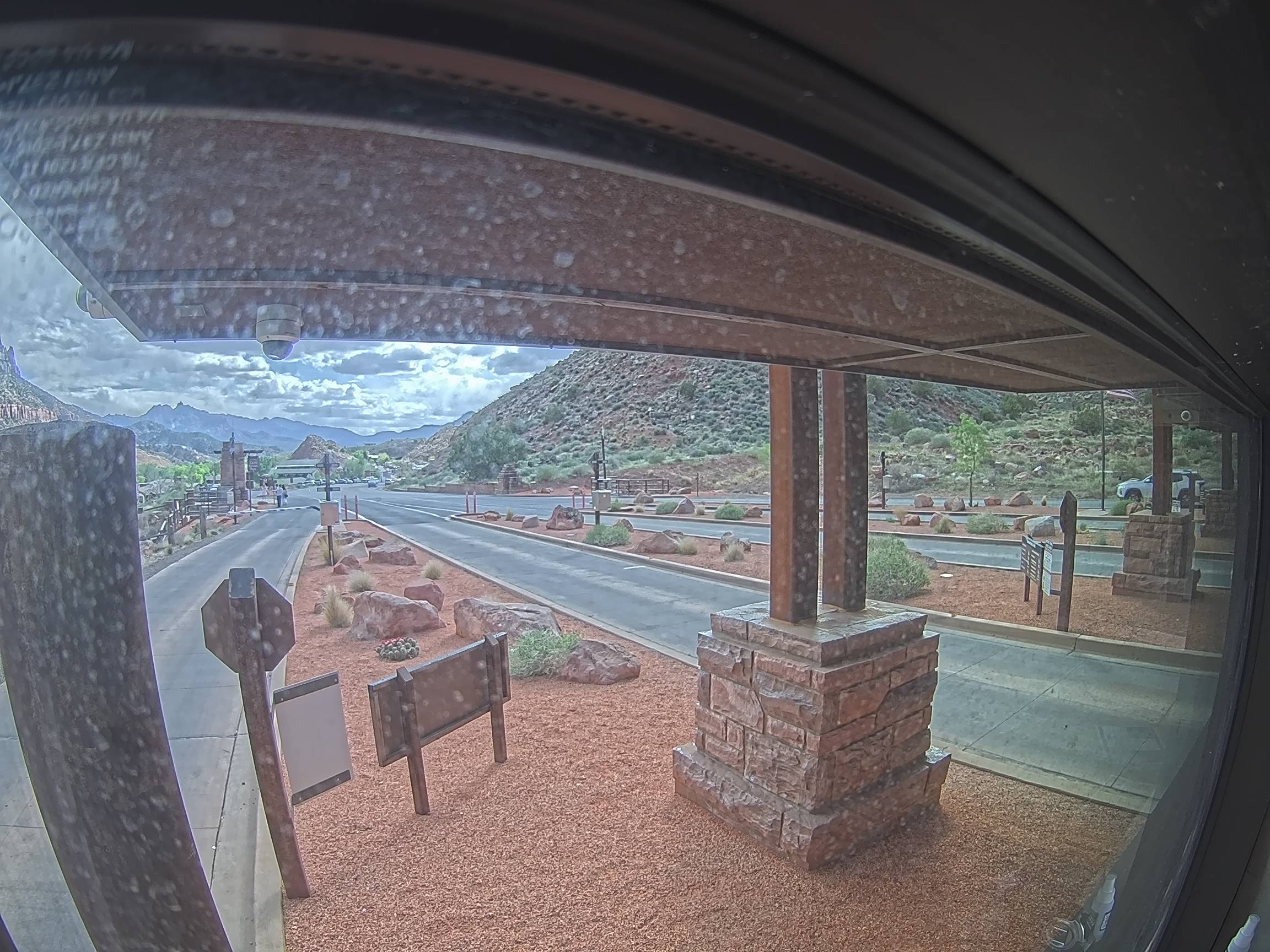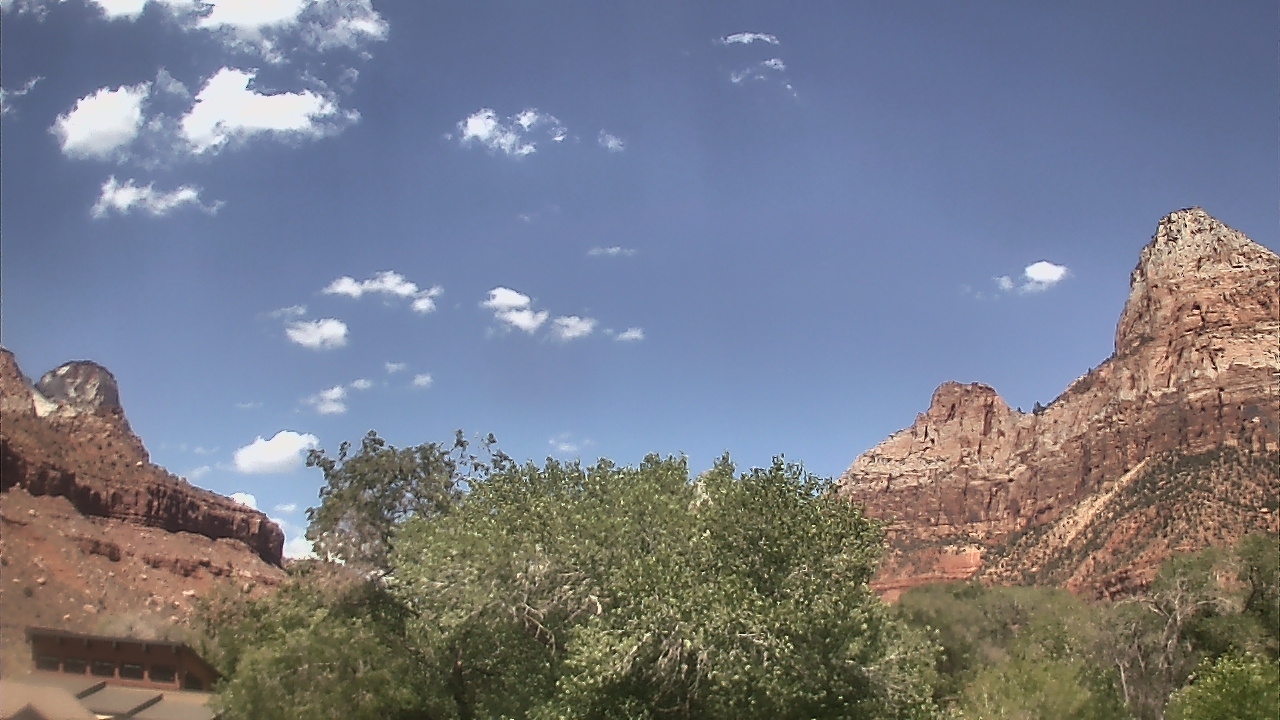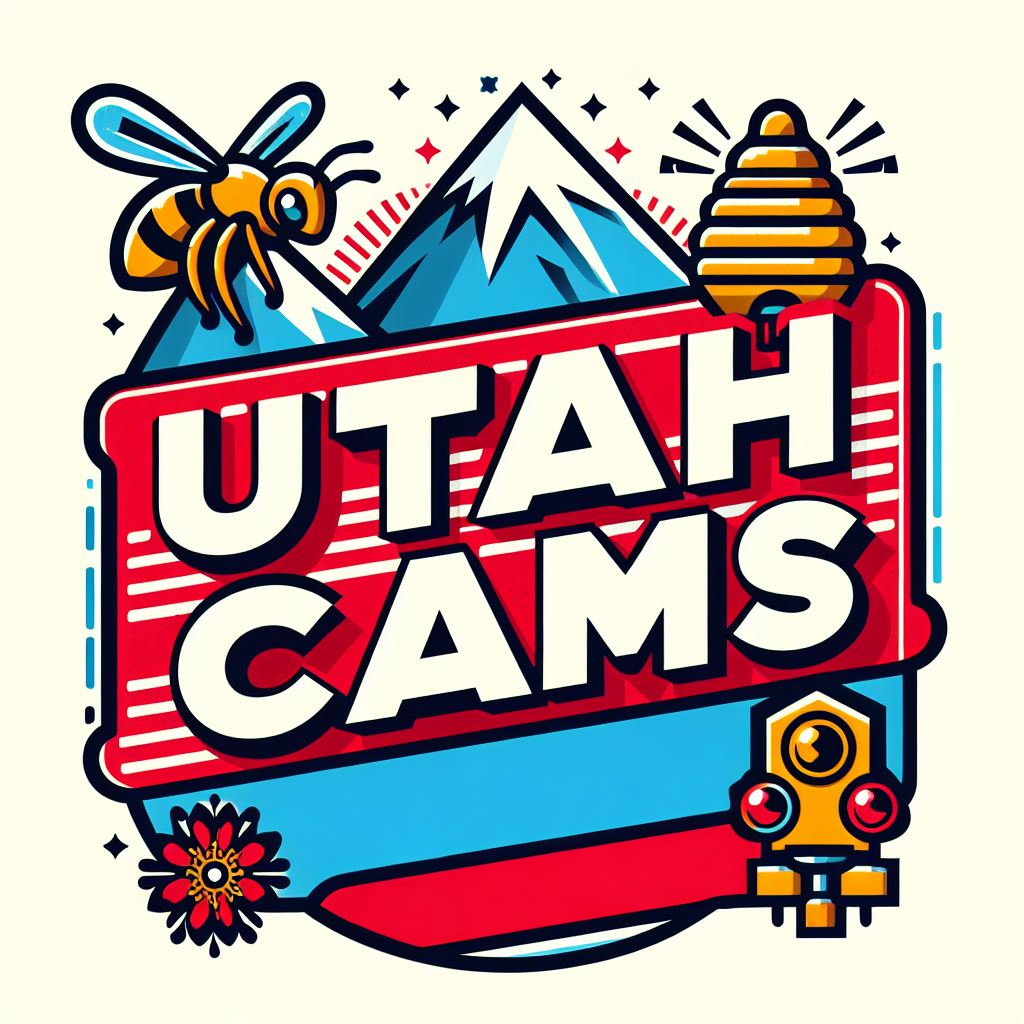Zion National Park, UT Weather Cams
South Gate Entrance Webcam

Zion N.P. – HQ Cam

Temples And Towers of the Virgin Cam

Zion National Park: A Land of Ancient Dwellings and Modern Marvels
Zion National Park Webcams. Nestled in the southwestern corner of Utah, Zion National Park boasts towering sandstone cliffs, emerald rivers, and cascading waterfalls. This breathtaking landscape, carved by millions of years of geologic forces, has also been home to human inhabitants for millennia. Let’s explore the rich history of Zion National Park, from its ancient settlements to its designation as a protected area.
Early Inhabitants: Native American Roots
The history of Zion National Park, located in southwestern Utah, begins long before it became a protected natural wonder. Archaeological evidence suggests that Native American tribes, including the Ancestral Puebloans and the Southern Paiutes, inhabited the region for thousands of years. These early inhabitants left behind petroglyphs, pottery, and other artifacts, providing a glimpse into their lives and cultures. The Southern Paiutes called the area “Mukuntuweap,” meaning “straight canyon,” and lived in harmony with the land, relying on its resources for sustenance and spiritual practices.
European Exploration: Discovery and Naming
European exploration of the Zion region began in the late 18th and early 19th centuries. Spanish missionaries and explorers were the first Europeans to traverse the area, mapping routes and searching for potential settlements. In the 1850s, Mormon pioneers, led by explorer Nephi Johnson, entered the region. They were struck by the towering cliffs and lush valleys, which they believed to be a divine manifestation. The settlers named the area “Little Zion,” drawing a parallel to the biblical sanctuary.
Settlement and Early Development
In the late 19th century, the fertile land and abundant water supply attracted more settlers to the region. The town of Springdale, located at the mouth of Zion Canyon, was established, and the settlers began farming and ranching. The natural beauty of the canyon started to draw attention beyond the local community, and early tourism efforts began to take shape.
Federal Protection: Establishing Mukuntuweap National Monument
Recognizing the need to preserve Zion’s unique landscapes, President William Howard Taft designated the area as Mukuntuweap National Monument on July 31, 1909. The name, derived from the Southern Paiute language, reflected the canyon’s cultural heritage. The monument’s establishment marked the beginning of federal efforts to protect and conserve the region’s natural and cultural resources.
Expanding Boundaries: Zion National Park
The initial designation of Mukuntuweap National Monument did not include the full extent of Zion’s magnificent landscapes. In 1918, the National Park Service (NPS) was established, providing a more structured approach to managing and protecting the nation’s natural treasures. On November 19, 1919, President Woodrow Wilson signed a bill enlarging the monument’s boundaries and redesignating it as Zion National Park. This name change aimed to attract more visitors, emphasizing the area’s divine and awe-inspiring qualities.
Infrastructure and Tourism: Building Access
With Zion National Park officially established, efforts to develop infrastructure and promote tourism began in earnest. The Union Pacific Railroad played a crucial role in this development, constructing the Zion Lodge in 1925 to accommodate the increasing number of visitors. The lodge, designed by noted architect Gilbert Stanley Underwood, featured a rustic style that blended seamlessly with the natural surroundings.
The construction of the Zion-Mount Carmel Highway and Tunnel in the late 1920s and early 1930s further enhanced access to the park. This engineering marvel included a 1.1-mile tunnel that bored through solid rock, connecting Zion with Bryce Canyon and the Grand Canyon. The road and tunnel facilitated automobile travel, making it easier for tourists to explore the park’s stunning landscapes.
Natural Wonders: Zion’s Geology and Ecology
Zion National Park is renowned for its breathtaking geology and diverse ecosystems. The park’s iconic features, such as towering sandstone cliffs, narrow slot canyons, and verdant valleys, were shaped over millions of years by the forces of water, wind, and tectonic activity.
The park’s geology is a testament to the power of erosion. The Virgin River, which flows through the heart of Zion Canyon, carved the deep gorges and sculpted the dramatic rock formations. The park’s towering cliffs, including the famous Angels Landing and the Great White Throne, are composed of Navajo Sandstone, a formation dating back to the Jurassic period.
Zion’s diverse ecosystems support a wide range of plant and animal species. The park’s varying elevations and microclimates create habitats for over 1,000 plant species, including desert shrubs, riparian vegetation, and high-altitude forests. Wildlife is abundant, with mule deer, bighorn sheep, and numerous bird species thriving in the park’s diverse environments.
Preservation and Conservation: Protecting Zion’s Heritage
Preserving Zion National Park’s natural and cultural heritage has been a central focus of the NPS and conservation organizations. Over the years, efforts have been made to manage visitor impact, protect wildlife habitats, and restore native vegetation.
In recent decades, the NPS has implemented various measures to address the challenges posed by increasing visitation. The park introduced a shuttle system in 2000 to reduce traffic congestion and minimize the environmental impact of automobiles. The shuttle system has been highly successful, providing visitors with convenient access to popular sites while preserving the park’s natural beauty.
Cultural Heritage: Honoring Native American Legacy
Efforts to honor and preserve the cultural heritage of Zion National Park have also been significant. The park collaborates with Native American tribes, including the Southern Paiutes, to ensure that their history and cultural practices are respected and integrated into park management. Interpretive programs and exhibits highlight the deep connections between the land and its indigenous inhabitants, fostering a greater understanding and appreciation of their heritage.
Modern Challenges: Balancing Preservation and Access
As Zion National Park continues to grow in popularity, balancing preservation and access remains a key challenge. The park’s stunning landscapes and outdoor recreation opportunities attract millions of visitors each year, leading to concerns about overcrowding, resource degradation, and visitor safety.
To address these challenges, the NPS has implemented various management strategies, including reservation systems, educational programs, and partnerships with local communities. These efforts aim to ensure that Zion’s natural and cultural resources are preserved for future generations while providing meaningful and enjoyable experiences for visitors.
A Timeless Legacy: Zion National Park Today
Today, Zion National Park stands as a testament to the enduring power of nature and the importance of conservation. Its towering cliffs, narrow canyons, and lush valleys continue to inspire awe and wonder in all who visit. As one of Utah’s “Mighty Five” national parks, Zion plays a vital role in the state’s tourism industry, contributing to the local economy and fostering a sense of pride among residents.
The park’s legacy is one of stewardship, resilience, and a deep connection to the natural world. Through ongoing conservation efforts and a commitment to preserving its unique landscapes and cultural heritage, Zion National Park will continue to be a sanctuary for nature and a source of inspiration for generations to come.
In conclusion, Zion National Park’s rich history, from its early Native American inhabitants to its designation as a national park and its modern-day challenges and triumphs, reflects the enduring beauty and significance of this remarkable place. Its story is a reminder of the importance of protecting and cherishing our natural treasures, ensuring that they remain vibrant and awe-inspiring for all who seek solace, adventure, and connection in the heart of Utah’s canyonlands.
For more information, visit the official Zion National Park website.
